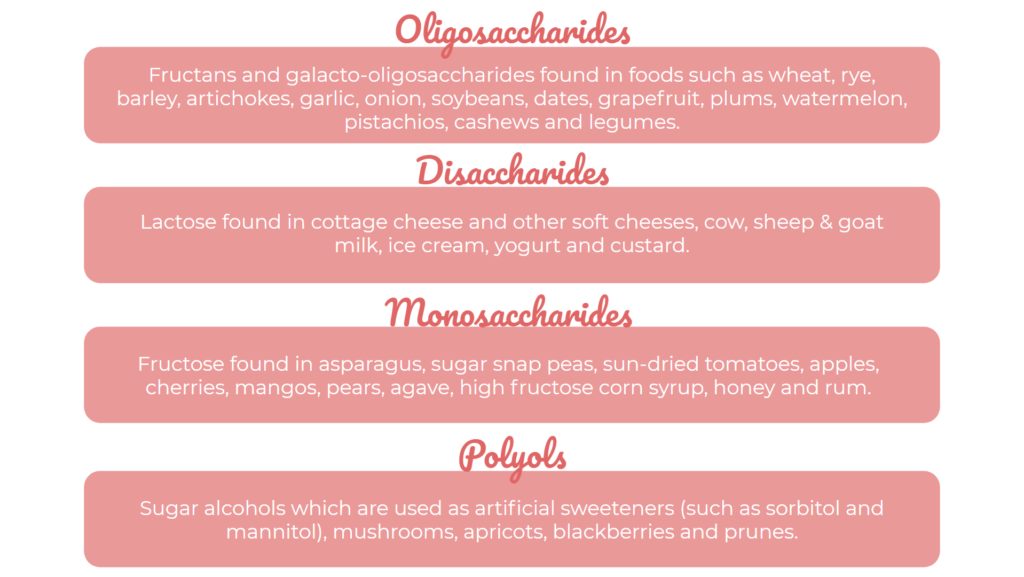“FOD…what?”
The typical response I get when I mention the FODMAP diet.
The FODMAP diet is a 3-step dietary plan that was designed to provide relief for those suffering from IBS. Starting with temporarily limiting consumption of FODMAPs – short-chain carbohydrates that are poorly absorbed by humans – high FODMAP foods are then reintroduced one by one in controlled quantities to determine dietary triggers. This means the diet is meant to be customized to your own personal intolerances, leading you to the third step of FODMAP personalization – a balance between well-tolerated high FODMAP foods and the avoidance of others.
What are FODMAPs anyway?
The acronym, “FODMAP,” stands for Fermentable Oligosaccharides, Disaccharides, Monosaccharides and Polyls. As the acronym suggests, these types of carbs are rapidly fermented by the bacteria living in our intestines. This results in a higher production of gas and a higher volume of water drawn into the gut which can trigger GI symptoms in individuals with IBS. Yes, not fun at all.
FODMAPs are found in everyday foods such as wheat, apples, garlic, onion, cauliflower and honey – seemingly random, is it not? This is why starting the elimination phase can be confusing and frustrating without help from a dietitian knowledgeable in the FODMAP diet. It is also not recommended to follow a strict low FODMAP diet for the longer term as this can reduce beneficial bacteria in the gut.
Examples of high FODMAP foods per group:

The goal is to eat as varied a diet as possible without experiencing digestive distress. Minimizing restriction is key to maintaining a high quality of life while also maximizing the potential of a happy, healthy gut!
Check out the following to learn more and for additional resources.
Monash University on the Low FODMAP Diet
Kate Scarlata – Registered Dietitian, World-Renowned Low FODMAP Diet Expert
If possible, I recommend purchasing the low FODMAP diet app by Monash University which outlines FODMAP content in foods that have been tested. The app is updated with new items as tests are completed, and also includes recipes and a guide book. Learn more about that here.
Information on this site does not replace or substitute advice and information provided by trained health professionals. As everyone is unique and as each individual’s journey towards health is their own, speak to your physician and/or dietitian if you are experiencing GI symptoms to determine the best route for you, and to rule out more serious intestinal conditions.
